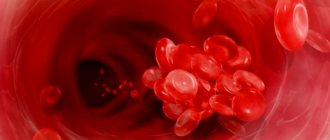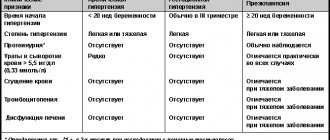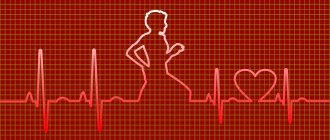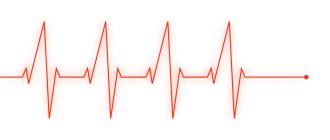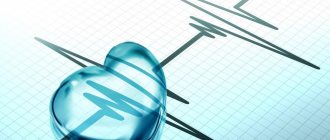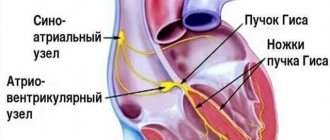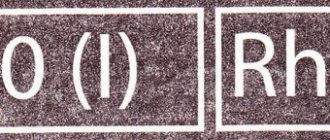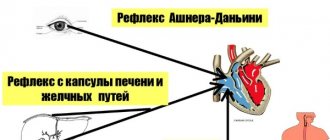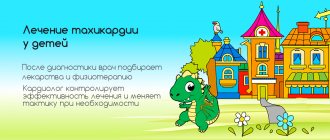Not everyone knows such a disease as orthostatic tachycardia. But with its development, the patient feels no better than with sinus arrhythmia. That is why it is important to carry out timely treatment, which helps to avoid more severe health complications.
Orthostatic tachycardia as a disease has not been fully studied. According to some conclusions, it develops due to a disorder of baroreceptors located in the vessels of the lower extremities. According to others, due to vegetative-vascular disorders, strong feelings and other psychological disorders.
During orthostatic tachycardia, a rapid heartbeat is felt after moving from a horizontal to a vertical position. In this case, the pulse is usually elevated, while blood pressure is normal or reduced.
The prognostic value for orthostatic tachycardia is favorable. The only thing is that it is not immediately possible to make a correct diagnosis, which is why the patient has to undergo various tests for a long time. Various methods are used for treatment, but arrhythmic drugs do not always help.
Video How to treat tachycardia. Working methods
General recommendations
To begin with, the patient should exclude provoking factors, which often contribute to the development of orthostatic tachycardia. It has been noted that in patients with a rhythm disturbance, dehydration is determined, that is, dehydration or hypovolemia. Therefore, mineralocorticoids or salt-based diets should be used to treat this condition. Increasing salt in the diet is possible only in the absence of heart failure, kidney disease, or arterial hypertension.
During prolonged immobilization, that is, immobilization, metabolic processes are also disrupted, which can cause signs of orthostatic tachycardia. If a person is often in a sitting position for a long time and then gets up suddenly, in many cases this provokes tachycardia, dizziness and other symptoms of the disease. To prevent this from happening, you should rise calmly, and if symptoms of a rhythm disorder are pronounced, you should stand sideways or from a sitting position.
Moderate physical activity is often recommended for patients with orthostatic tachycardia. Activities such as swimming and rowing, where you do not need to be in an upright position, are useful. Contrast showers and aromatherapy also help.
What are the causes of the condition?
Under physiological conditions, the phenomenon occurs due to prolonged exposure to a supine position, fasting, and in high altitude conditions among climbers. Orthostatic collapse often develops during pregnancy, especially in the later stages. After childbirth, the normal state is restored.
As for the pathological causes of orthostatic hypotension, they can be as follows:
| Cardiopathology | Angina pectoris, chronic heart failure, valve defects and other structures, myocardiopathy, rhythm disturbances |
| Vascular diseases | Atherosclerosis, varicose veins of the lower extremities |
| Endocrine disorders | Diabetes mellitus, chronic adrenal insufficiency (Addison's disease), hypoglycemia due to insulin overdose |
| Neurological pathologies | Autonomic disorders, Parkinson's disease, amyloidosis, spinal cord injury, metabolic neuropathies, Shy-Drager syndrome |
| Adverse reactions from taking medications | Beta blockers, Viagra and its analogues, antidepressants, monoamine oxidase inhibitors |
| Postprandial hypotension | Blood pressure disturbances that occur after eating, especially in old age. |
| Dehydration | Both due to a decrease in water intake and as a result of an increase in consumption - due to vomiting, diarrhea, hyperhidrosis (increased sweating), blood loss; |
| Idiopathic hypotension | The exact cause cannot be determined |
Drug treatment of orthostatic tachycardia
For such rhythm disturbances, in extreme cases, antiarrhythmic drugs are prescribed. Moreover, they are often ineffective. Therefore, the main thing in the treatment of orthostatic tachycardia is to identify the cause that caused it.
When palpitations occur due to thyrotoxicosis, methylthiouracil is used. Mercazolil, radioactive iodine-containing drugs. If the cause of the arrhythmia is heart failure, then digitalis is prescribed. Various heart defects and rheumatic carditis also provoke the development of orthostatic tachycardia and then reserpine and pyramidon are used.
According to various studies, the following drugs may be effective in the drug treatment of orthostatic tachycardia:
- Midodrine (belongs to adrenergic receptor antagonists).
- Propranolol (is a beta-blocker, start with small doses and gradually increase to 30 mg at a time).
Some researchers point to positive effects of rotary table testing, such as improved heart rate. But this method of treatment has not been fully studied.
How to treat?
If you witness an attack of orthostatic hypotension, you must provide first aid to the victim, which consists of the following:
- If a person has lost consciousness, sprinkle him with cold water or use ammonia (only very carefully, for example, moistening a napkin with a few drops of the solution, so as not to cause a burn to the nasal mucosa).
- When the patient returns to normal, give him warm tea with sugar.
- If consciousness does not return within one or two minutes, call an ambulance.
The following medications are used to treat manifestations of orthostatic hypotension:
- psychostimulants (caffeine preparations);
- alpha-adrenergic agonist (midodrine, etilephrine) – a hypertensive agent with a vasoconstrictor effect;
- mineralocorticoid (hydrocortisone) – helps increase circulating blood volume and constricts peripheral blood vessels.
- beta blockers (metoprolol, propranolol) – potentiate the effect of adrenal hormones;
- plant adaptogens (ginseng, eleutherococcus, lemongrass) – have a general tonic and strengthening effect on the body, increase blood pressure.
Specific therapy is also used for the specific disease that caused this syndrome.
Seizure prevention
An important part of the fight against this syndrome is prevention, which greatly reduces the frequency and severity of symptoms.
Doctors advise following the following recommendations:
- Avoid sudden changes in body position. When you wake up in the morning, lie down for a while and then slowly get up.
- If bed rest is indicated for you, take measures to combat physical inactivity. Do exercises right in bed, change your position periodically.
- If you have varicose veins, it is recommended to use compression bandages on the legs or special underwear;
- Maintain normal water balance - drink at least 1.5-2 liters of fluid per day. It is also necessary to consume enough salt.
- Walk more in the fresh air, engage in physical exercise (especially aimed at training the muscles of the legs and abdominals).
- Try not to overeat - this also provokes orthostatic collapse.
Treatment of orthostatic tachycardia using psychotherapy methods
Often used for neurogenic etiology of rhythm disturbances. First of all, this includes experienced stress, frequent anxiety, uncertainty and depression. It is prescribed only if, from a cardiological point of view, the patient is “all right.” That is, there are no significant disturbances in the functioning of the cardiovascular system and nothing else bothers the patient except the heartbeat.
In the process of psychotherapy, an individual approach is used, where all the issues that concern the patient are first clarified. Then, depending on the complexity of the situation, auto-training, positive psychotherapy, cognitive psychotherapy and other methods of influencing the patient’s psychological state are carried out.
If you follow medical recommendations, you can quickly recover from the discomfort. In the absence of organic heart damage, no consequences from the disease are observed.
4.75 avg. rating ( 93 % score) - 4 votes - ratings
Norm and results of pulse measurement
Normal heart rate is 60-80 beats/min. Changes in heart rate when changing position can be assessed at the following levels:
- from 0 to +10 can be considered an excellent result
- from +11 to +16 – good
- from +17 to +22 – normal
- more than +22 – already unsatisfactory
Deviations in the negative direction (i.e., slowing of the pulse during an orthostatic test) are also considered an unsatisfactory result.
Who is recommended for an orthostatic test?
The study of orthostatic stability is quite simple and requires minimal costs, both energy and material.
- An orthostatic test is strongly recommended for athletes, especially for those whose sport is associated with changes in body position in space (artistic gymnastics, rhythmic gymnastics, acrobatics, trampolining, diving, high jumping, pole vaulting, etc.)
- Also, an orthostatic test is often performed by those people who are trying to maintain the condition of varicose veins in good shape, thereby monitoring the effectiveness of training and other procedures.
- Everyone else who cares about their own health is recommended to regularly carry out an orthostatic test, and the mechanism of its implementation is so simple that everyone has the opportunity to conduct an orthostatic test at home,
If we take into account the number of devices that facilitate an already fairly easy study, take for example various kinds of “smart” watches like the Polar smart watch, then this study becomes tantamount to prevention.
Using mobile applications
If you still haven’t decided on the need to buy a sports watch, but want to control your health indicators now, you can use alternative methods. Namely, applications that will always be at your fingertips.
Today, there are already many applications that can quite accurately read a person’s pulse using a camera directly from the tip of the finger. Here are some of them:
Runtastic Heart Rate Pulse and Heart Rate
This application will allow you to find out your heart rate in any place convenient for you. The application also has a statistics function, thanks to which you can track your data
Unique Heart Rate Monitor
The application allows you to read your pulse and immediately enters the result into statistics, asking you what state you were in, taking measurements, be it rest, training or time after training. A nice addition will be the ability to leave a comment for each result.
Azumio Heart Rate Monitor
The application is entirely in English. Compared to the previous ones, it takes a little longer to read the pulse. It also allows you to leave notes for each result.
Blood Pressure History
There are applications that have the function of reading pulse and pressure at the same time, for example Blood Pressure History
Like the previous one, this application is entirely in English, but the functionality can be understood even with complete ignorance of the language. Calculates systolic, diastolic pressure and heart rate by touching the phone screen with your finger. Keeps a history log of your past measurements.
Well, the last application that we would recommend to those who want to get more serious sports indicators on the screen of their smartphone
HRV4Training
The application is paid, but by downloading it, you will receive not only more accurate indicators, but also the possibility of both classical and orthostatic data collection. Plus, the program has the ability to synchronize with the training log in other applications. But you must understand that you can only get the full range of functions if you have an HR heart rate monitor
With this set of knowledge about the orthostatic test and how to take its measurements, you are fully prepared for self-diagnosis and better training.
